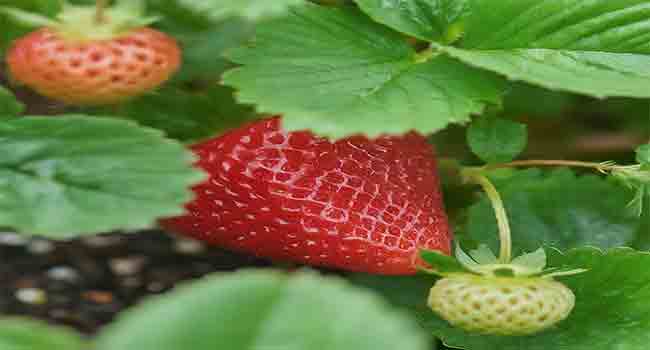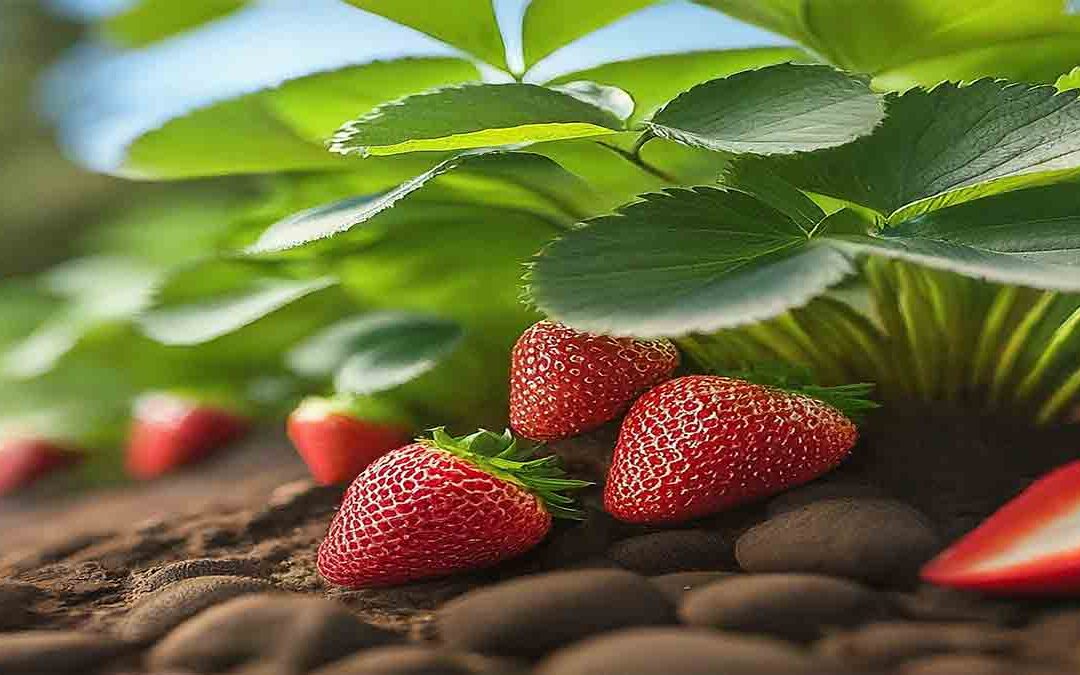Is there anything more satisfying than plucking a sun-warmed strawberry straight from your garden and savoring its sweet, juicy burst of flavor? Growing your own strawberries is a rewarding endeavor, but how long can you enjoy the fruits of your labor? The answer isn’t as straightforward as you might think – it depends on a variety of factors that can influence how many years your strawberry plants will continue to thrive and produce those delectable berries.
The lifespan of a strawberry plant is a common question among both novice and experienced gardeners. After all, understanding how long you can expect your plants to bear fruit is essential for planning and maintaining your strawberry patch. So, how many years do strawberry plants last? The truth is, it varies.
Factors That Influence Strawberry Lifespan
Several key factors come into play when determining how long your strawberry plants will remain productive:
Type of Strawberry:
June-bearing strawberries (like Earliglow and Allstar) typically yield one large harvest in early summer. They are most productive in their second and third years, after which their yield gradually declines. While they may continue to bear fruit for 5-6 years, many gardeners replace them after 3-4 years to maintain optimal productivity.
Everbearing/day-neutral strawberries (like Albion and Seascape) produce smaller harvests throughout the growing season, with a main crop in June and smaller ones in late summer and fall. Their lifespan is generally shorter than June-bearers, lasting around 2-3 years.
Day-neutral strawberries (like Tristar and Tribute) are similar to everbearing varieties but are less sensitive to day length. They may live slightly longer than everbearers, up to 3-4 years, but often require more frequent fertilization due to continuous fruiting.
Strawberry Variety
Within each type of strawberry, there are numerous varieties, each with unique characteristics, including varying lifespans and disease resistance. Choosing the right variety for your climate and growing conditions is crucial for maximizing longevity.
Growing Conditions
|
Factor |
Ideal Conditions |
|
Soil Quality |
Well-draining soil with a pH of 6.0-6.5 |
|
Sunlight |
Full sun, requiring 6-10 hours of direct sunlight daily |
|
Water |
Consistent moisture, especially during fruiting |
|
Temperature |
Ideally between 50-80°F (10-27°C) |
Climate and Region
Harsh winters in colder climates can damage strawberry plants and shorten their lifespan. In warmer climates, everbearing and day-neutral varieties may enjoy a longer growing season.
Disease and Pest Management
Fungal diseases (such as verticillium wilt and red stele) and pests (like spider mites and slugs) can significantly impact a strawberry plant’s health and longevity. Implementing effective prevention and treatment measures is crucial for preserving your plants.
Understanding Strawberry Lifespans by Type
June-Bearing Strawberries: The One-Hit Wonders
June-bearing strawberries, as their name suggests, grace us with one abundant harvest in early summer, usually within a 2-3 week window. These varieties truly shine in their second and third years, delivering the most bountiful harvests. However, their productivity gradually dwindles after this peak, which is why many gardeners choose to replace them after 3-4 years to ensure a consistently high yield. While they can technically continue producing fruit for 5-6 years, their diminishing returns often make replacement a more practical option. Popular June-bearing varieties include Earliglow and Allstar, known for their large, juicy berries.
Everbearing/Day-neutral Strawberries: The Season Extenders
If you crave strawberries throughout the growing season, everbearing or day-neutral strawberries are your best bet. These varieties produce smaller harvests but offer multiple fruiting periods, with a main crop in June followed by smaller harvests in late summer and fall. While their lifespan is generally shorter than June-bearers, typically lasting 2-3 years, their extended harvest season makes them a valuable addition to any strawberry patch. Look for varieties like Albion and Seascape to enjoy a continuous supply of fresh berries.
Day-neutral Strawberries: The Consistent Producers
Similar to everbearing varieties, day-neutral strawberries also offer multiple harvests throughout the growing season. However, they are less sensitive to day length, meaning they can continue producing fruit even as the days grow shorter. While their lifespan is comparable to everbearing varieties, sometimes reaching 3-4 years, they may require more frequent fertilization due to their continuous fruiting. Popular day-neutral varieties include Tristar and Tribute, offering consistent harvests of sweet, flavorful berries.
Nurturing Longevity: Essential Tips for Strawberry Care
To ensure your strawberry plants thrive and produce delicious fruit for as long as possible, follow these expert tips:
- Choose the Right Variety: Selecting the right strawberry variety is the foundation of a long-lasting strawberry patch. Opt for varieties known for their longevity, disease resistance, and adaptability to your specific climate. If you’re starting from scratch, consider purchasing certified disease-free plants (bare root plants) to ensure a healthy start.
- Provide Optimal Growing Conditions: Give your strawberries the best possible environment for growth by preparing the soil with compost, ensuring proper planting depth (18 inches for June-bearers, shallower for other types), and spacing plants adequately. Remember, strawberries thrive in full sun, well-draining soil, consistent moisture, and moderate temperatures.
- Prevent and Treat Diseases: Vigilance is key when it comes to protecting your strawberries from fungal diseases and pests. Implement preventative measures like avoiding overhead watering, ensuring good air circulation, and removing any infected plants promptly. If problems arise, consider organic or chemical treatments to safeguard your plants.
- Rotate Your Strawberry Beds: To break disease cycles and prevent soil depletion, rotate your strawberry beds every 3-4 years. This practice involves moving your strawberries to a new location in your garden, giving the old bed time to rest and regenerate.
- Renew and Revitalize: As your strawberry plants age, their productivity naturally declines. To maintain a vigorous and fruitful patch, consider replacing older plants with new ones every few years. You can use runner plants from your existing plants to propagate new ones, ensuring a continuous supply of fresh, healthy strawberries.
By following these simple yet effective tips, you can extend the lifespan of your strawberry plants and enjoy the sweet rewards of your gardening efforts for years to come.

Frequently Asked Questions About Strawberry Lifespan
Q: How many years will my strawberry plants produce fruit?
A: The lifespan of a strawberry plant varies depending on the type and variety, as well as growing conditions and care. Generally:
- June-bearing strawberries are most productive in their second and third years and can produce fruit for up to 5-6 years.
- Everbearing/day-neutral strawberries typically last 2-3 years.
- Day-neutral strawberries can sometimes be produced for 3-4 years.
Q: When should I replace my strawberry plants?
A: Consider replacing June-bearing strawberries after 3-4 years, even if they are still producing some fruit. This ensures optimal yield and fruit quality. Everbearing and day-neutral varieties should be replaced every 2-3 years.
Q: How can I tell if my strawberry plants are dying?
A: Signs of declining health in strawberry plants include:
- Reduced fruit production
- Smaller and less flavorful berries
- Yellowing or wilting leaves
- Signs of disease or pest damage
Q: Can I extend the lifespan of my strawberry plants?
A: Yes! You can maximize the lifespan of your strawberry plants by:
- Choosing disease-resistant varieties suitable for your climate
- Providing optimal growing conditions (soil, sun, water, temperature)
- Fertilizing regularly
- Preventing and treating diseases and pests
- Rotating strawberry beds every few years
- Replacing older plants with new ones
Q: What are the best strawberry varieties for longevity?
A: Some strawberry varieties known for their longevity include:
- June-bearing: Earliglow, Allstar, Jewel
- Everbearing/day-neutral: Albion, Seascape, Tristar
- Day-neutral: Tribute, Seascape, Albion
Q: Can I grow strawberries in containers?
A: Yes, strawberries can be successfully grown in containers. Choose a container that is at least 12 inches deep and wide, and use a well-draining potting mix. Ensure adequate sunlight and water regularly.
Q: Can I save seeds from my strawberries to grow new plants?
A: It’s not recommended to save seeds from hybrid strawberry varieties, as they may not produce plants true to the parent. It’s best to purchase new plants or propagate them from runners.
Q: What are the most common diseases affecting strawberry plants?
A: Common strawberry diseases include verticillium wilt, red stele, powdery mildew, and leaf spot. Prevention includes proper sanitation, choosing disease-resistant varieties, and avoiding overhead watering.
Q: How can I protect my strawberry plants from pests?
A: Common strawberry pests include spider mites, aphids, slugs, and snails. Protect your plants by using physical barriers, organic pesticides, or insecticidal soaps.
Conclusion How Many Years Do Strawberry Plants Last
In conclusion, the lifespan of your strawberry plants is a dynamic interplay of various factors. While the specific type of strawberry, its variety, and your growing conditions and climate play significant roles, your dedication to care and cultivation can truly make a difference.
Whether you’re nurturing June-bearing strawberries for their abundant early summer harvest, enjoying the extended season of everbearing varieties, or relishing the consistent harvests of day-neutral strawberries, understanding their unique lifespans is key to planning and maintaining a thriving strawberry patch.
By selecting the right varieties for your region, providing optimal growing conditions, and practicing diligent pest and disease management, you can maximize the longevity of your plants and enjoy delicious, homegrown strawberries for years to come.
Remember, even with the most meticulous care, strawberry plants naturally decline in productivity over time. Don’t hesitate to renew your patch every few years with fresh plants, ensuring a continuous cycle of sweet, juicy rewards for your gardening efforts.
So, whether you’re a seasoned strawberry enthusiast or a novice gardener eager to embark on this fruitful journey, remember that with the right knowledge and care, your strawberry patch can be a source of both delicious berries and lasting gardening joy.

